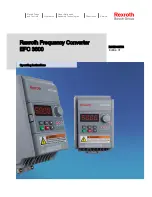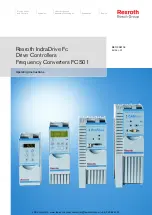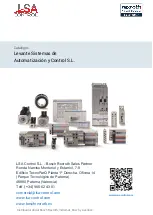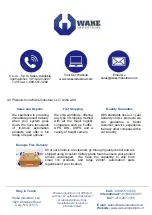
2.7.21 Primary Pumps
Primary pumps in a primary/secondary pumping system can be used to maintain a constant flow through devices that
encounter operation or control difficulties when exposed to variable flow. The primary/secondary pumping technique
decouples the “primary” production loop from the “secondary” distribution loop. This allows devices such as chillers to
obtain constant design flow and operate properly while allowing the rest of the system to vary in flow.
As the evaporator flow rate decreases in a chiller, the chilled water begins to become over-chilled. As this happens, the
chiller attempts to decrease its cooling capacity. If the flow rate drops far enough, or too quickly, the chiller cannot shed its
load sufficiently and the chiller’s low evaporator temperature safety trips the chiller, requiring a manual reset. This situation
is common in large installations, especially when two or more chillers are installed in parallel and primary/secondary
pumping is not utilized.
2.7.22 The VLT Solution
Depending on the size of the system and the size of the primary loop, the energy consumption of the primary loop can
become substantial.
A Adjustable frequency drive can be added to the primary system, to replace the throttling valve and/or trimming of the
impellers, leading to reduced operating expenses. Two control methods are common:
The first method uses a flow meter. Because the desired flow rate is known and constant, a flow meter installed at the
discharge of each chiller can be used to control the pump directly. Using the built-in PID controller, the Adjustable
frequency drive will always maintain the appropriate flow rate, even compensating for the changing resistance in the
primary piping loop as chillers and their pumps are staged on and off.
The other method is local speed determination. The operator simply decreases the output frequency until the design flow
rate is achieved.
Using a Adjustable frequency drive to decrease the pump speed is very similar to trimming the pump impeller, except it
doesn’t require any labor and the pump efficiency remains higher. The balancing contractor simply decreases the speed of
the pump until the proper flow rate is achieved and leaves the speed fixed. The pump will operate at this speed any time
the chiller is staged on. Because the primary loop doesn’t have control valves or other devices that can cause the system
curve to change, and because the variance due to staging pumps and chillers on and off is usually small, this fixed-speed
will remain appropriate. In the event, the flow rate needs to be increased later in the systems life, the Adjustable frequency
drive can simply increase the pump speed instead of requiring a new pump impeller.
Introduction to VLT® HVAC D...
VLT
®
HVAC Drive Design Guide
2-20
MG11BB22 - VLT
®
is a registered Danfoss trademark
2
2
Содержание VLT HVAC Drive FC 100 Series
Страница 10: ...How to Read this Design Gui VLT HVAC Drive Design Guide 1 6 MG11BB22 VLT is a registered Danfoss trademark 1 1...
Страница 56: ...Introduction to VLT HVAC D VLT HVAC Drive Design Guide 2 46 MG11BB22 VLT is a registered Danfoss trademark 2 2...
Страница 126: ...How to Install VLT HVAC Drive Design Guide 5 38 MG11BB22 VLT is a registered Danfoss trademark 5 5...
Страница 136: ...Application Examples VLT HVAC Drive Design Guide 6 10 MG11BB22 VLT is a registered Danfoss trademark 6 6...
Страница 160: ...RS 485 Installation and Set VLT HVAC Drive Design Guide 7 24 MG11BB22 VLT is a registered Danfoss trademark 7 7...
















































